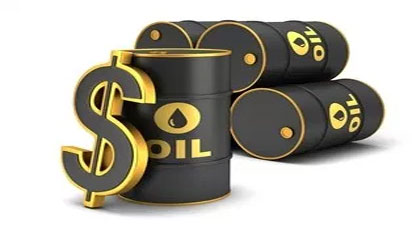- Joined
- Dec 6, 2010
- Messages
- 33,422
- Reaction score
- 5,683
U.S. Oil Vanishing From Chinese Tariffs Reveals America's Clout
Bloomberg News August 9, 2018
Bloomberg News August 9, 2018
The removal of U.S. crude from goods targeted by Chinese tariffs is a sign that America has become too big to ignore in the oil market.
Less than two months after threatening to impose levies on imports of U.S. crude, the world’s biggest oil buyer has now spared the commodity. Only fuels such as diesel, gasoline, propane will be hit with duties on Aug. 23, according to China’s commerce ministry. That’s after the nation’s buyers, including top refiner Sinopec, began shunning American supplies to avoid the risk of tariffs.
China’s original plan to target U.S. crude came at an inopportune time for the country’s buyers. Sinopec’s trading unit, Unipec, was embroiled in a dispute with Saudi Arabia, saying the producer’s prices were costly and cutting purchases just as it was boosting American imports. Two months on, refiners were faced with the risk of supply disruptions from Iran to Venezuela and paying more to take advantage of booming U.S. output.
“The U.S. has been and will remain the main source of incremental crude production globally,” said Den Syahril, an analyst at industry consultant FGE. “With several new refineries starting up over the next couple of years, China would thus be wary of taking a decision that could end up severely hurting its domestic refining industry.”
Before the tariff kerfuffle, U.S. crude exports to China had risen to 15 million barrels in June, the highest volume in data going back to 1996, according to U.S. Census Bureau and Energy Information Administration data. That made the Asian country the biggest buyer of American supply.
The shale boom, meanwhile, lifted U.S. output to an unprecedented 11 million barrels a day last month, establishing it in the ranks of other top producers Russia and Saudi Arabia. The increase has also weakened the cost of American supply relative to Middle East benchmark Dubai and Atlantic Basin marker Brent, raising the allure of U.S. shipments to Asia -- the world’s biggest oil consuming region.
Rival Purchases
While China’s Sinopec was avoiding purchases, regional rivals including Indian Oil Corp., Thailand’s PTT Pcl, Taiwan’s Formosa Petrochemical Corp., South Korea’s GS Caltex Corp. and SK Innovation Co. have been buying up American crude cargoes for delivery in the coming months.
Wednesday’s decision to omit crude will give Unipec the chance to bring crude cargoes loading from the U.S. in June and July into China without incurring additional costs, Michal Meidan, an analyst at industry consultant Energy Aspects Ltd., wrote in an emailed note on Aug. 8. However, she cautioned that refiners in the Asian nation may still be wary of boosting American oil purchases because it may yet be targeted with tariffs if tensions escalate.
The Chinese government decided to change the list of tariffs after consulting with industry associations and corporations to protect the interests of domestic consumers and companies, according to a statement posted on the Ministry of Finance’s website.
Rising Costs
A decline in operations at China’s independent refiners has raised prices of some fuels in the nation, according to Li Li, an analyst with Shanghai-based commodities researcher ICIS China. “If major refiners, who are U.S. oil buyers, incur a deficit, it’s possible the domestic market will face a fuel shortage as well as rising crude feedstock costs,” Li said.
American sanctions that will target oil exports from Iran starting in November are another risk. Concern is growing that U.S. President Donald Trump’s measures will curb the OPEC producer’s shipments at a time when production from another group member, Venezuela, is also dwindling in the midst of an economic meltdown. Both the producers are suppliers to China.
“With oil from Iran and Venezuela at risk, U.S. crude is offering Chinese refiners a good and abundant alternative,” said Sophie Shi, a Beijing-based analyst with consultant IHS Markit Ltd. “Imagine if this ideal resource was cut off. That would leave China solely dependent on Saudi Arabia, which seems too risky.”
https://www.bloomberg.com/news/arti...-from-chinese-tariffs-reveals-america-s-clout






